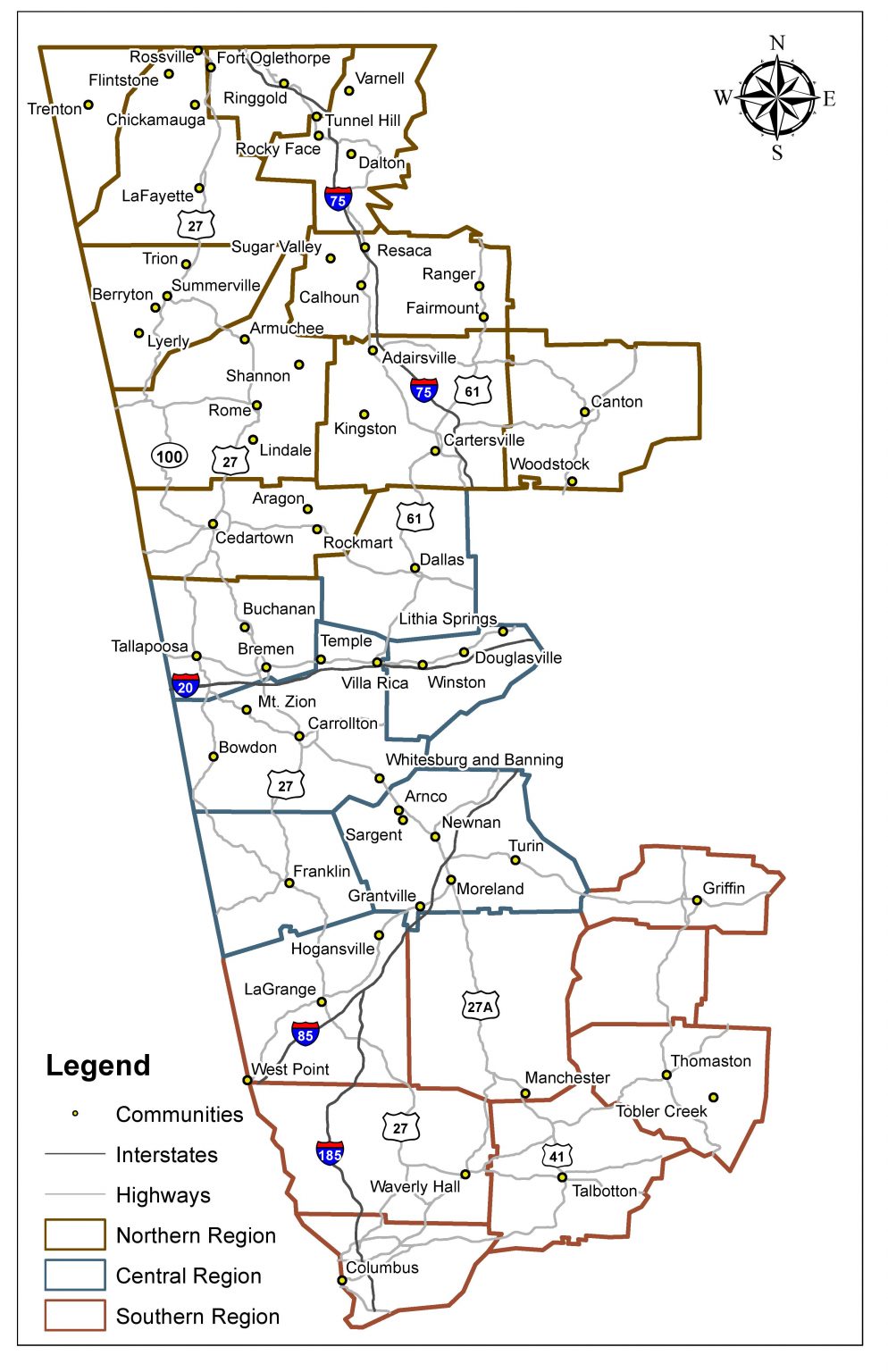World-renowned “Canton Denim” was produced in this southern town for many years before the textile industry died down in the 1980s.
In 1899, a rising mercantile business and the steady production of cotton in the city encouraged prominent Canton community leaders to raise money to build a cotton mill. Completed in 1901 and employing 125 local men, women, and children from northeast Georgia, under the leadership of R.T. Jones Sr, Canton Cotton Mills produced cotton thread in 1901. In an effort to gain revenue after several financial setbacks in 1902, Jones made several changes to the mill’s management and added a dye house that allowed the mill to produce denim.
“Canton Denim” quickly became famous and production increased in the following years. The success of “Canton Denim” allowed for the construction of a second mill in 1923, one mile north of the first mill. Both mills built homes for their employees and the mill village featured amenities, such as indoor plumbing, running water, electricity, and ice delivery. Jones Mercantile Store, owned and operated by one of R.T. Jones’s sons, became a popular shop for the residents of the Canton Cotton Mills mill villages. Later on, Jones Mercantile served as the parent company for Etowah Manufacturing Company, which produced trousers from “Canton Denim” as well as chenille bedspreads.
Canton Cotton Mills faced many hardships, including the Great Depression, floods, a major strike, and changes in leadership. In the late-1970s, the textile market slowed due to cheaper markets overseas. Canton Cotton Mills shut their doors in the spring of 1981.
Visit
Things to Do
- Canton Cotton Mills No. 1 and Riverdale Mill Village, 225 Reformation Parkway: Once the site of the original Canton Cotton Mills, this facility previously operated 20,000 spindles and employed 500 people. Its principal product, “Canton Denim”, was known nationwide. It has been redeveloped and contains several restaurants, a brewery, a church, and office space. The houses of the mill village are private homes and are not open to the public. The entrance is on North Street and Riverdale Circle. This neighborhood was home to the workers of Canton Cotton Mills #1. The homes were built by the company and originally rented for $5 per month. Employees were allowed space for a garden and the company performed all maintenance on the homes. In the 1960s, the houses were sold to mill employees.
- Cherokee County Historical Society, 221 East Marietta Street: This historical society was founded in 1975 and is the sole organization in Cherokee County dedicated to preserving and collecting the county’s history. Visit their museum to learn more about the history of Cherokee County. The museum’s hours of operation are Wednesday through Friday 10:00 am – 5:00 pm and Saturday 10:00 am – 3:00 pm.
Places to See
The following properties are not open to the public, but you can view them from the exterior to learn more about the buildings that supported the textile industry here.
- Canton Cotton Mills No. 2 and Mill Village, 550 Riverstone Parkway: These locations are private property and are not open to the public. Originally built as Canton Cotton Mill #2, this building was opened in 1923 after the success of “Canton Denim” on the national market. No. 2 was larger than the original mill as it brought an additional 23,000 spindles to the operation and employed 600 people. Today, this mill is home to Canton Mill Lofts. The entrance to the mill village can be found at the intersection of Center Street and Juniper Street. This village was much larger than No. 1’s Riverdale neighborhood. The company employed assembly line construction methods to rapidly build similar homes. Some of the original amenities of these homes included indoor plumbing, running water, and electricity.
- Historic Jones Mercantile, 130 East Main Street: Established in 1879, Jones Mercantile served as a focal point of the central business district. This location accepted both mill currency and store credit as payment for anything from hardware to haberdasheries. In the late 1980s, the building was purchased by Cherokee County for additional office space. 2017 saw the beginning of restoration for this historic location.
- Canton Cotton Mills No. 1 Office Building, 221 West Main Street: This building served as the center for all of the administration needs for Canton Cotton Mills. Today this space is leased for commercial businesses.
- Riverdale Baptist Church and School, 15 Riverdale Circle: This church and school combo was constructed and funded by Canton Cotton Mills for the mill village residents. In 1969, this building was purchased by the church congregation from the mill.
History
Explore this community’s history via the drop-down sections below!
Charter Trail Members
Resources to Explore
Click on the following links to learn more about this region.
- Canton Driving Spur Tour
- Facts for Kids
- Digital Library of Georgia
- Georgia Historical Society
- Georgia Archives Virtual Vault
- New Georgia Encyclopedia
Back to Community List
Email the Trail at wgtht@westga.edu or visit our Contact Us page for more information.













